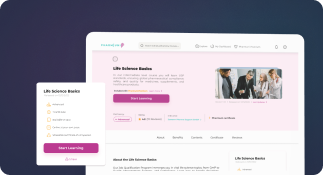In the pharmaceutical industry, ALCOA insights play a pivotal role in ensuring compliance, quality, and safety. These insights form the foundation of data integrity by focusing on reliability, accuracy, and traceability. Maintaining these qualities is essential for meeting regulatory requirements and achieving operational efficiency. By adhering to ALCOA principles, organizations can safeguard data integrity and support critical decision-making processes.
This article delves into ALCOA insights and their practical application in managing data effectively within the pharmaceutical sector.

What Is ALCOA and Its Importance?
The acronym ALCOA stands for Attributable, Legible, Contemporaneous, Original, and Accurate. These principles play a vital role in maintaining data integrity across industries, especially in pharmaceuticals. They ensure that all records are clear, reliable, and trustworthy. In the pharmaceutical industry, where accurate data directly impacts product quality and patient safety, ALCOA provides a strong foundation for compliance. It guarantees that data meets regulatory requirements and supports informed decision-making. By consistently applying these principles, organizations can minimize risks and enhance operational efficiency.
Pharma professionals must understand and implement ALCOA to meet FDA and other regulatory guidelines. These principles ensure that every piece of data is traceable to its origin, reducing errors and discrepancies. Recording information in real-time strengthens reliability and accuracy. Moreover, embedding ALCOA into daily processes builds trust with regulatory bodies and stakeholders. This approach not only ensures compliance but also upholds high-quality standards. Organizations that prioritize ALCOA principles create a culture of accountability, improving long-term outcomes and protecting patient health.
Sign up for Introduction to Good Documentation Practices Course
Key Terms Related to ALCOA Insights
Data must identify who performed the action or recorded the information.
All records should be clear, readable, and permanent.
Information must be recorded at the time the activity occurs.
Data should be the first record captured, not duplicated.
Records must be free from errors and represent the true state.
These terms highlight the essential components of data integrity and help organizations achieve compliance effortlessly.
Fast-track your career with VIP consultation
ALCOA Insights: Regulatory Expectations
Global Standards for ALCOA Compliance
Global standards for ALCOA compliance ensure consistency in data integrity across the pharmaceutical industry. Regulatory agencies like the FDA and EMA emphasize the importance of reliable and accurate records. These standards require organizations to record data that is attributable, legible, and contemporaneous. They also focus on maintaining original and accurate records to support decision-making. By following these principles, companies can meet international requirements and reduce the risk of non-compliance. Adopting global standards also fosters trust between pharmaceutical companies and regulatory authorities, which ensures smooth inspections.
Compliance with these standards demands consistent effort and robust systems. Organizations must implement validated tools to ensure data meets ALCOA requirements. They should also conduct regular training to educate employees about these principles. This approach strengthens accountability and prevents errors in critical processes. Moreover, using real-time monitoring tools helps organizations identify and address discrepancies early. Aligning with global ALCOA standards supports operational efficiency and product quality. In turn, this commitment enhances patient safety and strengthens a company’s reputation.


Meeting Regulatory Goals with ALCOA Insights
Meeting regulatory goals becomes easier when organizations integrate ALCOA insights into their processes.
These principles ensure data integrity, which supports compliance with strict pharmaceutical regulations. Regulatory bodies like the FDA and EMA expect accurate, reliable, and real-time records. ALCOA helps companies meet these expectations by providing a clear framework for data management. By following ALCOA, organizations ensure every record is attributable to its source and legible for audits. This alignment reduces the risk of violations and fosters trust during inspections.
To achieve regulatory goals, companies must adopt robust systems that support ALCOA principles. They need to document data contemporaneously to maintain accuracy and reliability. Regular audits help identify gaps and ensure processes align with regulations. Training employees about ALCOA insights also enhances their understanding of compliance requirements.
Furthermore, advanced tools can streamline documentation and minimize errors. Meeting regulatory goals not only avoids penalties but also enhances operational efficiency. Ultimately, prioritizing ALCOA builds a solid foundation for success in the pharmaceutical industry.
The Main Objectives of ALCOA insights
ALCOA insights serve several critical objectives in the pharmaceutical industry. These include:
Ensuring Regulatory Compliance
Aligning with global standards like FDA 21 CFR Part 11 and EU Annex 11.
Maintaining Data Integrity
Ensuring data is accurate and reliable for decision-making.
Improving Patient Safety
Guaranteeing that only safe, high-quality products reach the market.
Reducing Risks
Minimizing errors, discrepancies, and compliance failures.
Optimizing Processes
Streamlining operations by fostering reliable data practices.
Understanding these objectives helps professionals recognize the broader impact of adhering to ALCOA principles.
Strengthening Data Integrity with ALCOA Insights
Ensuring Accurate Records
Ensuring accurate records becomes achievable when organizations apply ALCOA insights consistently. These principles guide companies to maintain reliable and precise data in every process. Attributable records help identify who performed actions, creating accountability and traceability. Legible documentation ensures clarity, reducing misunderstandings during audits or reviews. Contemporaneous data recording strengthens accuracy by capturing information in real-time. Original records, not altered copies, provide authenticity, while accurate entries reflect the true state of activities. Together, these principles safeguard the quality and integrity of records across all operations.
To achieve accuracy, organizations must establish robust processes aligned with ALCOA principles. They should train employees to follow proper data-entry practices and emphasize the importance of real-time recording. Implementing validated systems can automate data collection, minimizing the chances of human error. Additionally, routine audits help identify gaps and maintain compliance with industry standards. Using ALCOA insights ensures records meet regulatory requirements and support effective decision-making.

Building Trust in Data Integrity with ALCOA
Building trust in data integrity requires a strong foundation, and ALCOA principles provide this. These principles ensure every record is reliable, clear, and accountable. Attributable data identifies who created it, fostering transparency in every process. Legible records allow easy review, which builds confidence during inspections or audits. Contemporaneous documentation strengthens trust by recording data in real-time, reducing errors. Original and accurate records guarantee authenticity and reflect true information. By following ALCOA, organizations create a culture where data integrity becomes a priority.
To build trust, companies must integrate ALCOA principles into daily operations. Training employees on these principles enhances awareness and accountability at all levels. Using advanced systems for data collection ensures accuracy and minimizes manual errors. Regular audits help identify gaps and reinforce compliance with regulatory standards. Trust grows when stakeholders see an organization consistently adhering to ALCOA guidelines. Accurate and reliable data supports smooth regulatory reviews and strengthens relationships with authorities. Ultimately, prioritizing ALCOA principles builds credibility and ensures sustainable success in the pharmaceutical industry.
FDA and ALCOA Insights
The FDA emphasizes ALCOA insights to ensure data integrity across the pharmaceutical industry. These principles guide companies to maintain reliable, accurate, and secure records at all times. The FDA requires data to be attributable, meaning it must identify who recorded it. Records must also remain legible to ensure clarity during reviews and inspections. Additionally, the agency mandates contemporaneous documentation to capture data in real-time, reducing errors. By aligning with these requirements, organizations protect data integrity and strengthen regulatory compliance.
Companies must prioritize ALCOA insights to meet FDA guidelines and safeguard public health. They need to verify the accuracy of records and ensure their security throughout the lifecycle. Implementing robust systems and training employees helps organizations consistently follow these principles. Regular audits and monitoring practices further support compliance and prevent data discrepancies. By adhering to ALCOA, companies can confidently face inspections and ensure patient safety. Ultimately, these efforts not only satisfy FDA expectations but also build trust in pharmaceutical operations.
Practical Strategies for Implementing ALCOA Insight
Digitize Records
Shift from paper to electronic documentation for better accuracy.
Conduct Regular Training
Keep employees informed about data integrity requirements.
Use Validation Tools
Ensure systems meet regulatory expectations through rigorous validation.
Monitor Continuously
Implement real-time monitoring to detect errors early.
Each strategy simplifies compliance while fostering a culture of excellence in data management.
Conclusion
In the pharmaceutical industry, maintaining data integrity is non-negotiable. ALCOA insights provide a robust framework for achieving this goal, ensuring records are reliable, accurate, and compliant. By understanding and implementing these principles, companies can safeguard patient safety, meet regulatory requirements, and enhance operational efficiency. Make ALCOA the backbone of your data management strategy and build a foundation of trust and quality.
References

Ershad Moradi
Ershad Moradi, a Content Marketing Specialist at Zamann Pharma Support, brings 6 years of experience in the pharmaceutical industry. Specializing in pharmaceutical and medical technologies, Ershad is currently focused on expanding his knowledge in marketing and improving communication in the field. Outside of work, Ershad enjoys reading and attending industry related networks to stay up-to-date on the latest advancements. With a passion for continuous learning and growth, Ershad is always looking for new opportunities to enhance his skills and contribute to pharmaceutical industry. Connect with Ershad on Facebook for more information.

Pharma Management Courses: Managing GMP, Compliance, and Cross-Functional Teams (2025)
Pharma management courses are designed to equip professionals with essential leadership skills in GMP, compliance, and cross-functional team coordination. These courses help individuals manage regulatory challenges, reduce audit failures, and ensure product quality, making them crucial for career advancement in the pharmaceutical industry.

Pharma Industrial Training Certificate: Career Outcomes, Jobs, and ROI (2025)
A Pharma Industrial Training Certificate can significantly enhance your career in the pharmaceutical industry. This certificate equips you with hands-on experience in Good Manufacturing Practices (GMP), documentation, and manufacturing processes—skills that are directly applicable in various pharmaceutical roles.

Certificate in Pharmaceutical Manufacturing: Complete Career Guide (2025)
A Certificate in Pharmaceutical Manufacturing gives you a fast, structured way into GMP-based production roles. You learn core topics such as GMP rules, manufacturing processes, documentation, and QA/QC. In 6–12 months, you move from theory to shop-floor skills and boost your chances of landing a stable pharma job.





